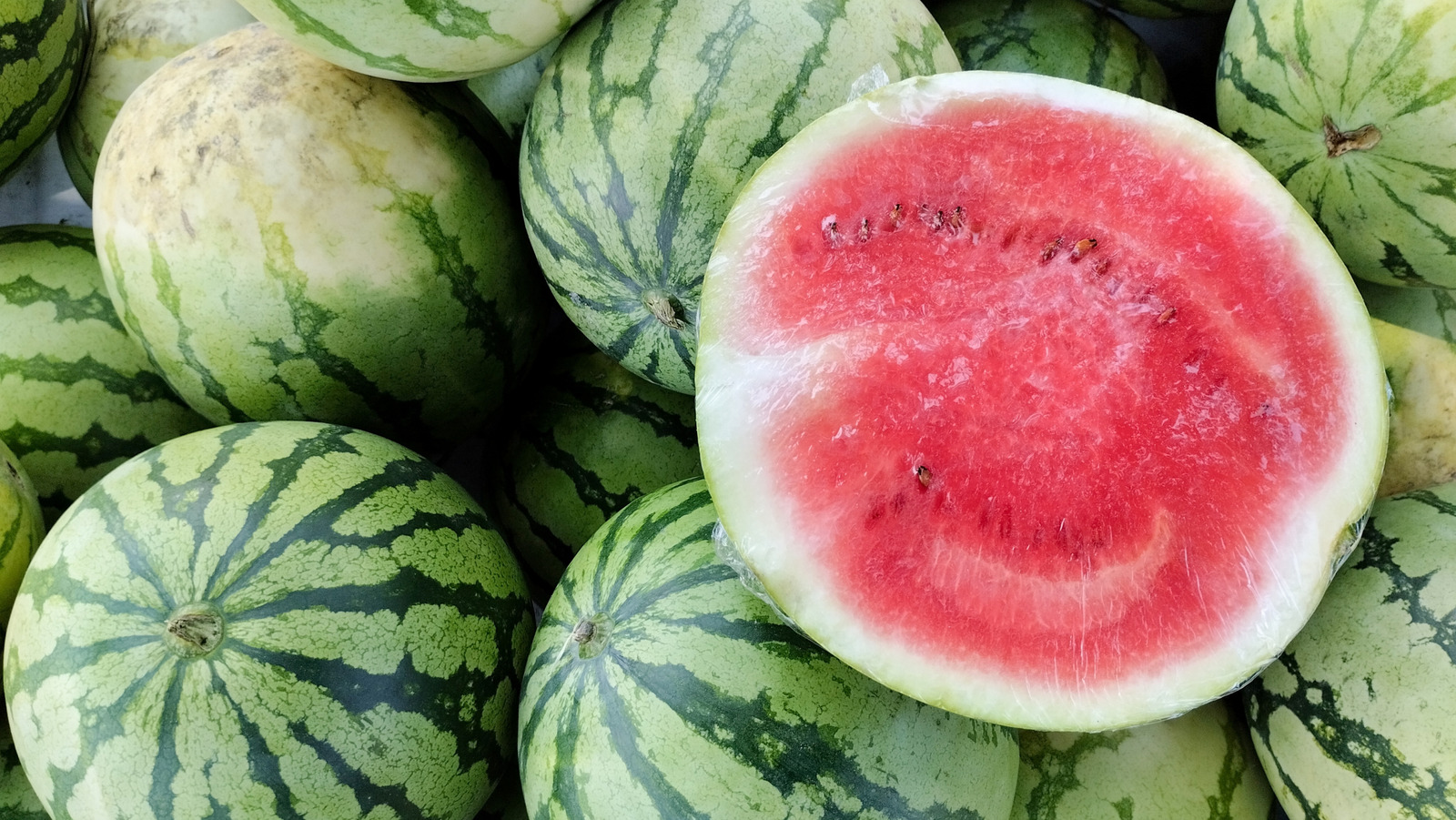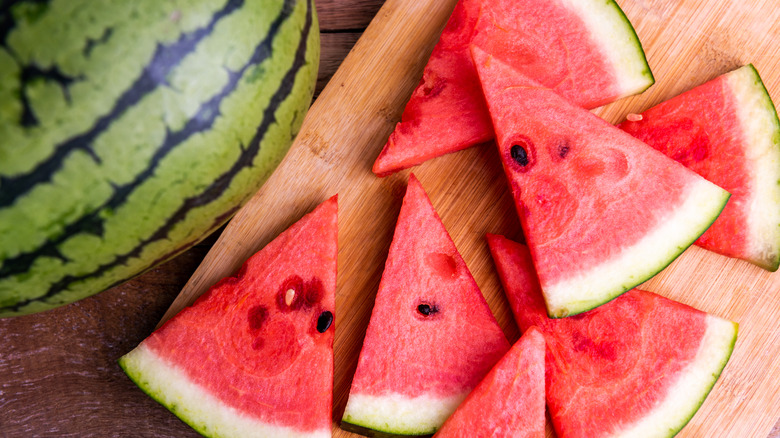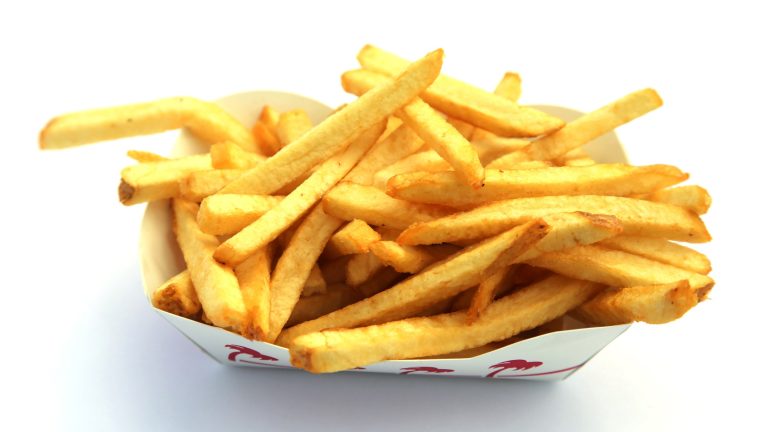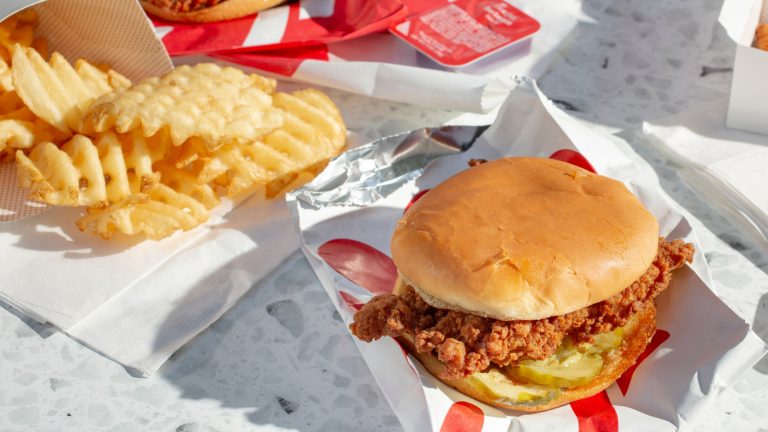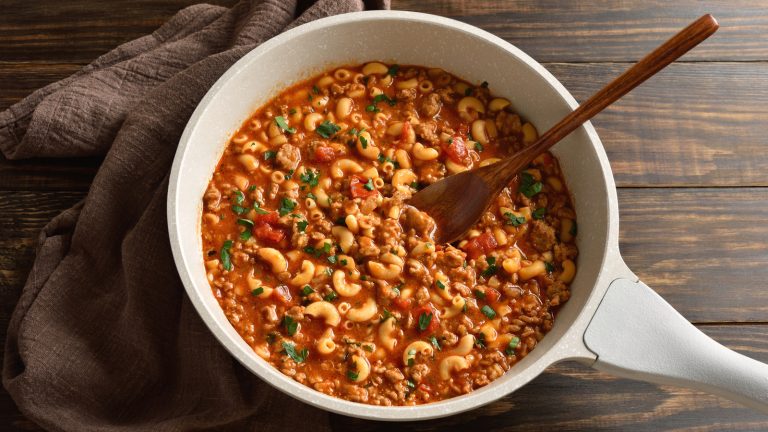Each year, the onset of longer days and rising temperatures doesn’t just indicate summer is drawing near, it also signals the beginning of watermelon season. These hefty, hydrating fruits are not only refreshingly delicious on a hot day, they’re packed full of lycopene, vitamin C, vitamin A, fiber, and plenty of other nutrients to keep us cool and healthy all summer long. Of course, all of this is dependent on choosing a watermelon you actually want to eat.
A ripe watermelon is juicy, sweet, and soft without being mushy, while an underripe one is somehow simultaneously sour and flavorless, dry, and unpleasantly crisp. Getting a good one may at first seem like a game of chance, but once you know the right things to look for, you’ll be able to spot a ripe watermelon a mile away. Though some people swear by the knock test (a hollow sound allegedly means it’s ripe), there’s a simple visual cue that’ll help you pick the right watermelon for your gazpacho salad recipe every time.
It’s called the two-finger test and it works like this — watermelons famously feature a series of light and dark striated green stripes on the outside of their rinds. If the dark green stripes are as wide as your index and middle fingers together, it indicates that sweet, juicy, soft flesh awaits you inside. Just be sure to store your watermelon properly when you get it home to ensure the best possible flavor once you’re ready to slice into it.
Other telltale signs of a ripe watermelon
Watermelons are oddly mysterious fruits. Though the two-finger test seems fairly reliable, the pattern of striations varies from melon to melon, with no two fruits sharing exactly the same markings. This means the dark stripes may blend seamlessly with the lighter areas, making it tough to tell how wide they actually are. In this case, you’ll need to examine the available selection of fruits for other telltale signs of ripeness.
First, look at the shape. Round is best, as it indicates a sweeter fruit, whereas oblong or slightly misshapen watermelons tend to be rather tasteless and watery instead of juicy. Most watermelons also have a field spot — the part of the rind that rested on the soil as it grew. Ripe watermelons feature a buttery yellow field spot, whereas melons picked too early have a white field spot. Well-pollinated (and therefore more delicious) watermelons also have a matrix of brown webbing on the rind.
Whether you’re looking for a watermelon for your favorite fruit salad or as the main ingredient for tasty watermelon shandies, these indicators will help you determine whether that big, beautiful looking watermelon is worth your time. If all else fails, give the rind a second glance. Contrary to what would seem to make sense, it’s best to avoid the shinier melons. Instead, a dull, matte rind is indicative of a watermelon allowed to rest on the vine a little longer to develop all those tasty sugars and juicy flesh.


